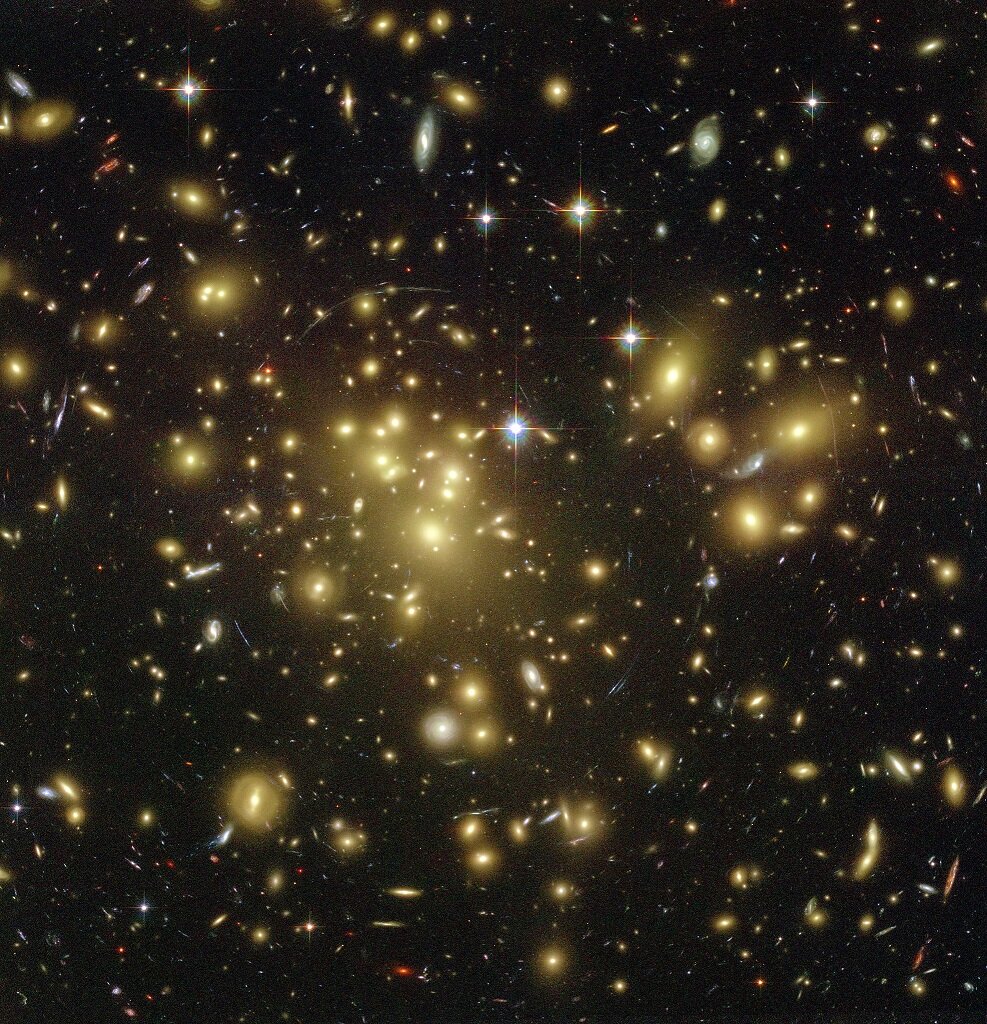In our continued search for exoplanets, the ultimate goal is to find habitable worlds like our own and perhaps even signs of extraterrestrial life. However, scientists recently proposed a new and unique use for exoplanet data, using exoplanets, rogue planets, and brown dwarfs as dark matter detectors.
Exoplanets may prove to be a useful tool in the search for dark matter in the future- Image Credit: Darryl Fonseka via iSTock/Getty Images - HDR tune by Universal-Sci
Dark matter is a mysterious form of matter that is not directly detectable with electromagnetic radiation (light) like ordinary matter. It is presumed to account for more than 80% of all the matter in the Universe. Until now, its presence has mainly been observed through the gravitational effects it has on stars and galaxies.
Physicists have previously been investigating the effects of gravitationally captured dark matter on white dwarfs and neutron stars. If there is adequate gravitational force available, deposited dark matter kinetic energy can distinctively increase the temperature of astrophysical systems. Irrespective of the intensity of gravitational strength, dark matter annihilation can also induce heating.
In a paper published in the science journal: Physical Review Letters, scientists propose that dark matter could also be identified by determining the impact it has on the temperature of exoplanets.
Juri Smirnov, one of the authors of the paper, explained in a press release that when the gravity of exoplanets captures dark matter, the dark matter moves to the planetary core, where it gets destroyed, after which its energy gets discharged as heat. The more dark matter that is captured, the more it should increase the temperature of the exoplanet.
Lensing arcs in this Hubble image indicate powerful gravitational lensing, indicating the presence of dark matter - Image Credit: NASA, N. Benitez (JHU), T. Broadhurst (Racah Institute of Physics/The Hebrew University), H. Ford (JHU), M. Clampin (STScI),G. Hartig (STScI), G. Illingworth (UCO/Lick Observatory), the ACS Science Team and ESA via Wikimedia Commons
Advantages of using exoplanets as dark matter detectors
There are several advantages to using exoplanets in the search for dark matter. Firstly: scientists predict that there are approximately 300 billion exoplanets in our galaxy alone. Currently, there are over 4380 confirmed exoplanet discoveries, and that number is rapidly growing—a true treasure trove of potential data.
Exoplanets are also much easier to find than neutron stars: infrared neutron star research requires a comparatively cold neutron star candidate at a relatively close distance to Earth. While pulsars have been found at distances of ∼100 pc, it is conceivable that an adequately cold and sufficiently close-by neutron star may not be found at all or cannot be measured with enough exposure time. Meanwhile, exoplanets outnumber neutron stars in our galaxy by at least a factor of a thousand, and they are known to exist in close enough vicinity for dark matter searches.
On top of the factors mentioned above, there are also some physical benefits of studying exoplanets. They have a much larger surface area than neutron stars. While neutron stars are much more compact and permit higher heating rates in part due to enhancements from kinetic heating, exoplanets and brown dwarfs are much larger. An average neutron star has a radius of about 10 kilometers, while exoplanets of interest range between 50,000 to 200,000 kilometers. This means that exoplanets can be more accurately measured at further distances, including locations near the galactic center, leaving the possibility of providing a dark matter density-dependent heating signal.
An artist’s impression of a neutron star - Image Credit: Pitris via iStock/Getty Images
Finally, and perhaps most importantly, due to the lack of nuclear fusion, exoplanets remain relatively cold in comparison to neutron stars and pulsars. Lower temperatures enable a clearer signal over the background for dark matter heating. In addition, low core temperatures partially preclude dark matter evaporation, providing comparatively higher sensitivity. There even exist so-called 'rogue planets' (planets without a host star, like Cha 110913−773444), which would be ideal candidates for in-depth research.
How to measure the internal heat of exoplanets
The heating of exoplanets could, in principle, be measured by NASA's James Webb Space Telescope, an infrared space telescope that is expected to be launched in October of this year. It is supposed to succeed the famous Hubble Space Telescope and will present enhanced infrared resolution and sensitivity over Hubble. Given that exoplanets have anomalous heating associated with dark matter, astronomers should be able to pick it up, according to Smirnov.
The size of the Hubble Space Telescope primary mirror in perspective next to the James Webb Space Telescope primary mirror - Image Credit: Bobarino via Wikimedia Commons
Scientists believe that dark matter density increases toward the center of our Milky Way galaxy. If that is true, researchers should find that the closer planets are to the galactic center, the more their temperatures should rise.
"If we would find something like that, it would be amazing. Clearly, we would have found dark matter," Smirnov said.
Smirnov and his colleague and co-author Rebecca Leane Leane propose one type of search that would require looking at so-called 'Super Jupiters' and brown dwarfs in close proximity to Earth as well as rogue planets due to the above-mentioned reduction in background heat near such astronomical objects and the lack of interference from nearby stars in case of rogue planets.
According to the duo, the best part of their proposal is that it doesn't require any additional or new types of instruments. "With so many exoplanets being studied, we will have a tremendous opportunity to learn more than ever before about dark matter," Smirnov said.
Let's hope this rather creative new tool in the search for dark matter will deliver some new insights into this mystifying phenomenon.
Suggested further reading:
If you enjoy our selection of content, consider subscribing to our newsletter
FEATURED ARTICLES:













